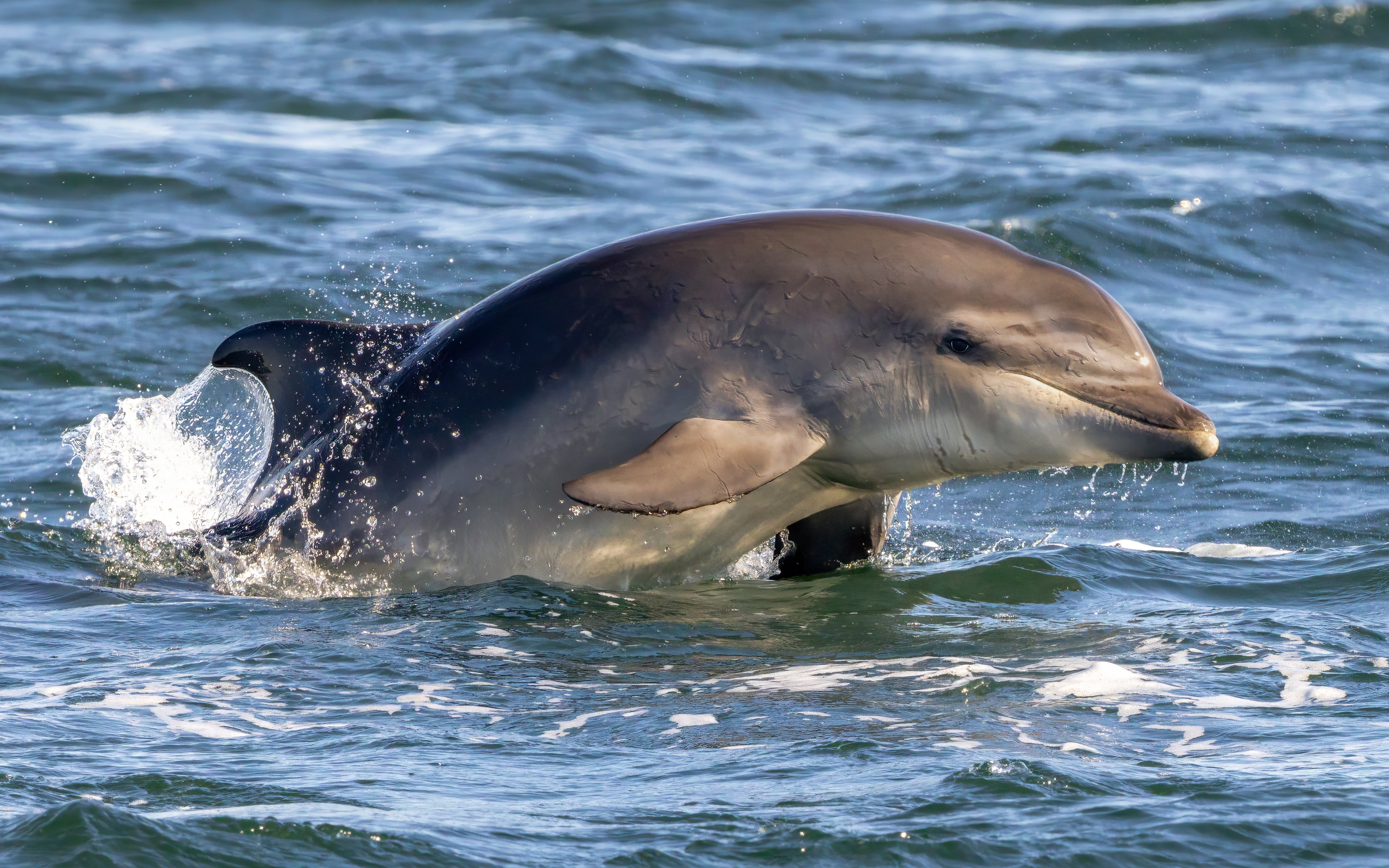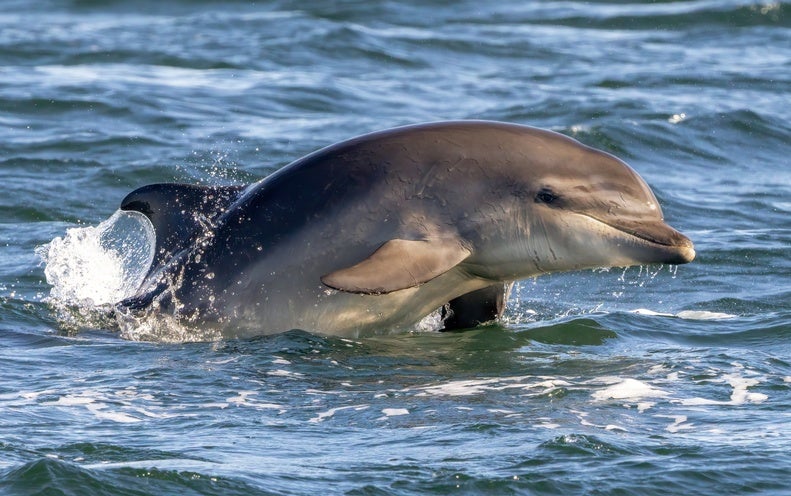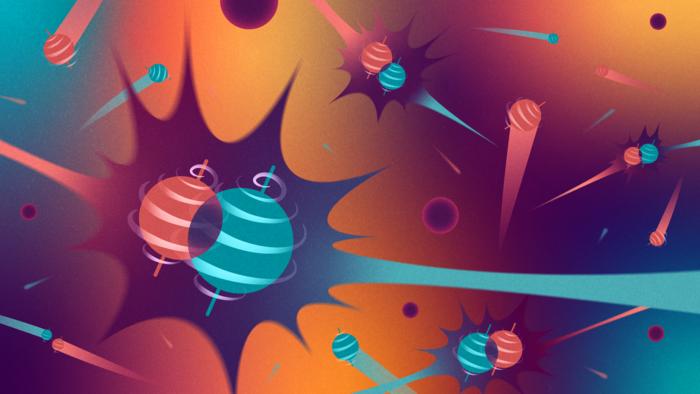
People in Laguna proudly refer to their southern Brazilian city as the “national capital of fish-herding dolphins.” For at least 140 years, artisanal fishers and bottlenose dolphins have worked together in careful synchrony to catch mullet in a lagoon there. The spectacle of nets flying through the air while dolphins dive into the murky water has become a popular attraction for tourists and is recognized by local authorities as an intangible cultural heritage.
Before 1998 no one knew for sure whether humans and the cetaceans were really working together or just appeared to do so—or whether one species was benefiting but not the other. It was then that scientists confirmed that this renowned example of human-wildlife cooperation does aid at least one of the participating parties: the fishers who enjoy larger catches when they join forces with dolphins. Most people believed that the dolphins were reaping rewards, too, but this hypothesis was more difficult to put to the test.
Now scientists have finally confirmed that the benefits are indeed mutual. An exhaustive new study published in the Proceedings of the National Academy of Sciences USA on January 30 shows that dolphins who team up with fishers gain more food and have an edge in survival, compared with those that hunt without bipedal partners.
The resident population of up to 60 dolphins use their echolocation to find schools of mullet that humans otherwise would not be able to detect beneath the opaque water. Then the cetaceans herd the school toward the fishers, who are usually standing in the shallow water just offshore. The dolphins give a behavioral cue, such as a sudden deep dive, to let the fishers know when to cast their nets. The net casting benefits the dolphins by breaking up the school of speedy fish and making it easier for them to capture individual mullet. “Each brings a new skill to the table that increases their mutual success,” says the study’s lead author Mauricio Cantor, a behavioral ecologist at Oregon State University.
These celebrated interspecies hunts are in danger of going extinct, however, according to findings reported in the paper. “Our data suggest this interaction is becoming rarer over time,” Cantor says. “If things continue the way they are, these interactions might disappear in the next 50 to 60 years.”
Laguna’s cooperative fishers and dolphins are one of the few remaining examples of a millennia-old tradition that has occurred all around the world. Fossil evidence from Europe indicates that humans and wolves might have collaborated to hunt prey as early as 32,000 years ago. One of the first clear records of human-wildlife cooperation dates back to the first century C.E., when Pliny the Elder mentioned fishers working with dolphins in modern-day southern France. Since then cooperativelike interactions with people have been recorded in at least 16 species—mostly cetaceans but also some birds—in countries as varied as Australia, Myanmar, Mauritania and Japan.
Many of these collaborations have disappeared, however. And those that remain are almost all in decline thanks to pollution, overfishing and habitat loss, combined with the general disconnection of humans from the natural environment. “Today most interactions we have with wildlife tend to be antagonistic and not mutually beneficial,” Cantor says. “So it’s really important to understand how these things happen and what we can do to safeguard this unique biological phenomenon.”
Cantor and his colleagues used a variety of approaches to better understand the intricacies of human-dolphin cooperation in Laguna. They collected data using drones, underwater microphones, sonar cameras, GPS and interviews with fishers. The study’s senior author Fábio Daura-Jorge of the Federal University of Santa Catarina in Brazil also brought to the table 15 years of survey responses from fishers, as well as more than a decade of photographs and dolphin behavior records for both individual animals and groups.
Putting all of these data together, the researchers found that both dolphins and humans catch more fish when they team up. Fishers had 17 times more success when they worked with dolphins, compared with when they were on their own, and dolphins had more success in these partnerships as well (the researchers are still working on quantifying the dolphins’ gains). Dolphins that partnered with fishers also experienced a 13 percent boost in survival, compared with noncooperative ones, most likely because of the animals spending the majority of their time in the lagoon. In areas nearby, some fishers use illegal drift nets that drown dolphins as bycatch. “By avoiding these encounters, cooperative dolphins have a higher probability of surviving,” Cantor says.
These findings support “the long-standing hypothesis that these dolphins experience a higher prey capture rate when interacting with fishers,” says Jessica van der Wal, a behavioral ecologist at the University of Cape Town in South Africa, who was not involved in the research. “I applaud the authors for their comprehensive and creative angles to better our understanding of the natural history of [this] complex cooperation.”
The researchers also built a model to simulate the interactions between fishers and dolphins and predict how they would change over time. Fishers have already anecdotally reported a decline in joint hunting practices over the past 15 years, and the model predicted that this trend would continue in the future—putting Laguna’s human-dolphin cooperation in danger of extinction. The main drivers for that decline, the authors found, were decreasing mullet populations caused by overfishing and climate change—along with livelihood changes in the artisanal fishing community.
The authors offer some proposed solutions for avoiding this predicted loss from coming to pass. Fishers, for example, could be incentivized to continue working with dolphins if buyers of their catch were willing to pay a premium for their fish. This way, Cantor says, “even if catch declines over time, there will be a higher reward for fishers in monetary terms.”
Protecting dolphins from becoming bycatch would also help. The government could invest in more policing in the area to remove illegal nets and apprehend violators.
Raising awareness about human-wildlife cooperation is also an important piece of this conservation puzzle. “Getting people excited about these rare phenomena is a way to add more value to these kinds of cultural practices that seem to be fading away,” Cantor says. “Preserving cultural diversity has been shown to promote the preservation of biological diversity as well.”
Stephanie King, a behavioral biologist at the University of Bristol in England, who was not involved in the research, agrees about the importance of protecting the few examples of human-wildlife cooperation that remain. “Humans are renowned for the ways they cooperate,” she says, “but what is even more remarkable is two distantly related species with very different evolutionary histories acting cooperatively to achieve a common goal.”
The “exemplary” new study, King continues, is “of huge importance” not only for the light it sheds “on how human-wildlife cooperation is coordinated and achieved but also how it can be conserved in the face of large-scale environmental and social challenges impacting both fishers and dolphins.”
























































